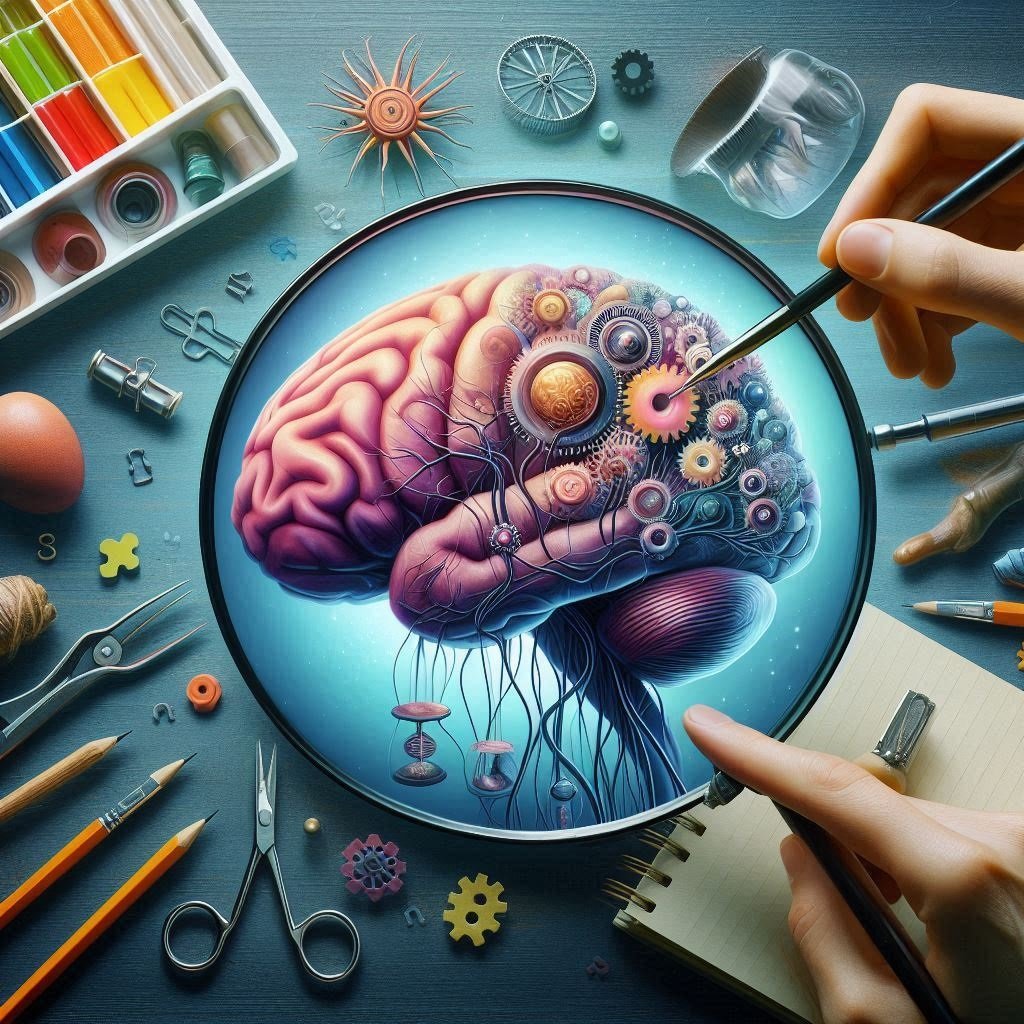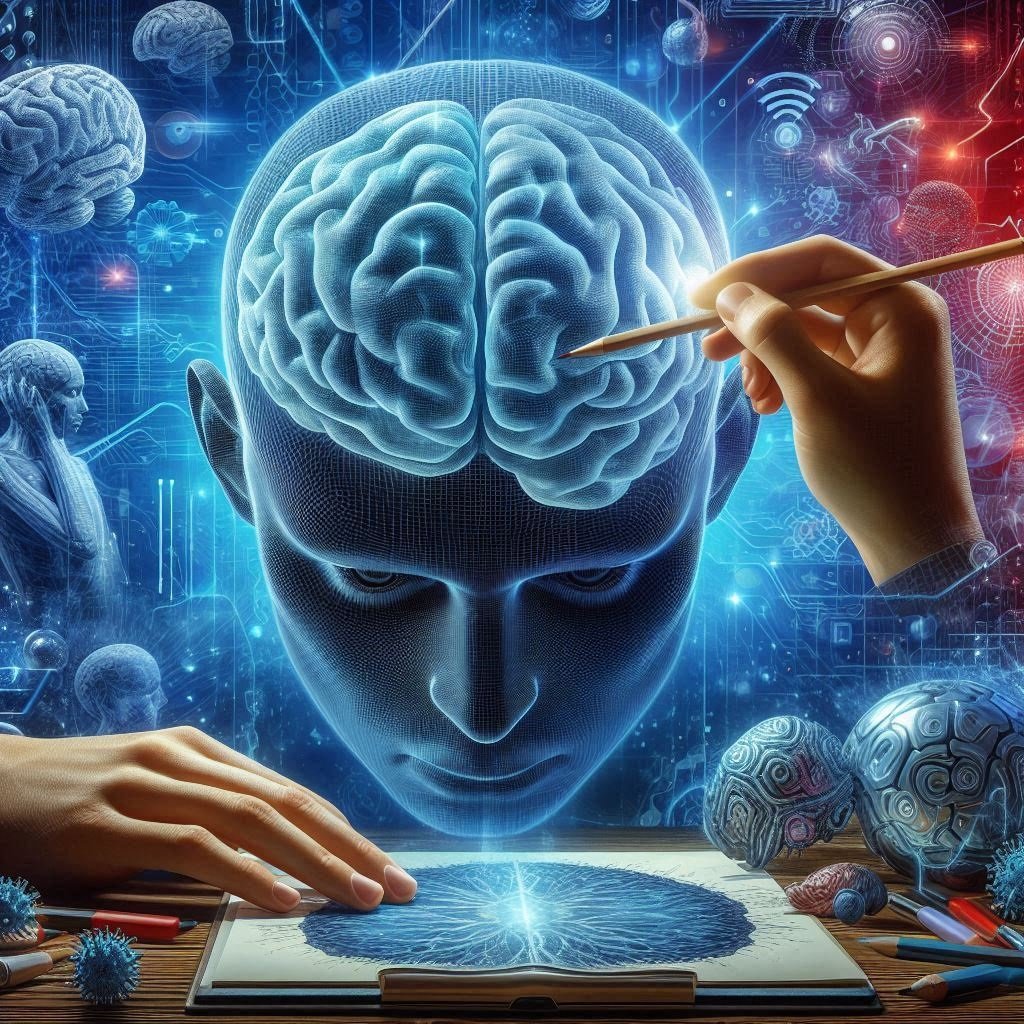The brain is one of the most fascinating organs in the human body. It’s the control center for everything we do, think, and feel. Neuroscience, the study of the nervous system, helps us understand how the brain works. This beginner’s guide will introduce you to the basic concepts of neuroscience, including the brain’s structure, its functions, and how it influences our behavior. Join us as we uncover the mysteries of the brain!
What is Neuroscience?
Neuroscience is a branch of science that focuses on the nervous system. It includes studying the brain, spinal cord, and nerves. Neuroscientists work to understand how these parts communicate and how they affect our thoughts, feelings, and actions. By studying neuroscience, we can learn more about mental health, neurological diseases, and how to improve brain function.
The Structure of the Brain
The brain is a complex organ with many parts, each with specific functions. Let’s break down the main components:

The Cerebrum
The cerebrum is the largest part of the brain. It is responsible for higher brain functions like thinking, memory, and decision-making. The cerebrum is divided into two halves, known as hemispheres. Each hemisphere controls the opposite side of the body.
The Cerebellum
The cerebellum is located at the back of the brain. It controls balance, coordination, and fine motor skills. When you learn to ride a bike or play an instrument, you’re using your cerebellum.
The Brainstem
The brainstem connects the brain to the spinal cord. It controls basic life functions like breathing, heart rate, and blood pressure. The brainstem is vital for survival.
The Limbic System
The limbic system is a group of structures deep within the brain. It is involved in emotions, motivation, and memory. Key parts of the limbic system include the hippocampus, amygdala, and hypothalamus.
How Neurons Work
Neurons are the building blocks of the nervous system. They are specialized cells that transmit information throughout the body. Here’s how they work:
Structure of Neurons
Neurons have three main parts:
- Dendrites: Branch-like structures that receive signals from other neurons.
- Cell Body: Contains the nucleus and processes incoming signals.
- Axon: A long, thin structure that carries signals away from the cell body to other neurons, muscles, or glands.
Synapses and Neurotransmitters
Neurons communicate through synapses, tiny gaps between them. When a signal reaches the end of an axon, it triggers the release of chemicals called neurotransmitters. These neurotransmitters cross the synapse and bind to receptors on the next neuron, passing the signal along.
Brain Functions and Behavior
The brain controls various functions that influence our behavior. Let’s explore some key areas:
Sensation and Perception
Our brain processes sensory information from the environment. This includes sight, sound, touch, taste, and smell. Sensory information is sent to the brain, where it is interpreted, allowing us to perceive and respond to our surroundings.
Movement and Coordination
The brain sends signals to our muscles, enabling movement and coordination. The cerebellum plays a crucial role in fine-tuning these movements, ensuring they are smooth and precise.
Emotions and Memory
The limbic system is heavily involved in emotions and memory. The amygdala processes emotions like fear and pleasure, while the hippocampus is essential for forming new memories.

Learning and Cognition
The cerebrum is responsible for higher cognitive functions, including learning, problem-solving, and decision-making. Different regions of the cerebrum specialize in different tasks, such as language, reasoning, and spatial awareness.
The Role of Neuroplasticity
Neuroplasticity refers to the brain’s ability to change and adapt throughout life. This adaptability is crucial for learning, memory, and recovery from injury. Here are some ways neuroplasticity manifests:
Learning New Skills
When we learn new skills, our brain forms new connections between neurons. Practicing these skills strengthens these connections, making them more efficient.
Recovering from Injury
After a brain injury, other parts of the brain can sometimes take over the functions of the damaged areas. This process, known as functional reorganization, is a testament to the brain’s remarkable adaptability.
Adapting to Changes
Our brain continuously adapts to changes in our environment and experiences. This adaptability helps us cope with new situations and challenges.
Exploring Neuroscience Research
Neuroscientists use various methods to study the brain and nervous system. Some common techniques include:
Brain Imaging
Brain imaging techniques, such as MRI and PET scans, allow scientists to see inside the brain. These images help researchers understand brain structure and function.
Electrophysiology
Electrophysiology involves measuring electrical activity in the brain. This technique helps scientists study how neurons communicate and how brain activity relates to behavior.
Genetic Studies
Genetic studies explore how genes influence the brain and behavior. By studying genetic variations, researchers can learn about the biological basis of neurological disorders.
The Impact of Neuroscience on Medicine
Neuroscience has significant implications for medicine. Here are a few examples:
Treating Neurological Disorders
Neuroscientists work to understand and treat neurological disorders such as Alzheimer’s disease, Parkinson’s disease, and epilepsy. Advances in neuroscience have led to new treatments and therapies that improve the quality of life for patients.
Mental Health
Neuroscience research has also improved our understanding of mental health conditions like depression, anxiety, and schizophrenia. This knowledge helps in developing more effective treatments and therapies.

Brain-Computer Interfaces
Brain-computer interfaces (BCIs) are devices that allow direct communication between the brain and external devices. BCIs have the potential to help people with disabilities regain lost functions, such as movement and communication.
The Future of Neuroscience
The field of neuroscience is continually evolving. Here are some exciting areas of future research:
Artificial Intelligence and the Brain
Researchers are using artificial intelligence (AI) to model brain function and understand complex neural processes. AI can help identify patterns in large datasets, leading to new insights and discoveries.
Personalized Medicine
Personalized medicine tailors treatments to an individual’s genetic makeup. Neuroscience is playing a crucial role in developing personalized treatments for neurological and psychiatric disorders.
Brain Enhancement
Scientists are exploring ways to enhance brain function through various means, such as neurostimulation and cognitive training. These advancements could lead to improved cognitive abilities and better mental health.
How to Get Involved in Neuroscience
If you’re fascinated by the brain and want to learn more, there are several ways to get involved:
Education and Courses
Many universities and online platforms offer courses in neuroscience. These courses can provide a solid foundation in the subject and introduce you to the latest research and techniques.
Join a Community
Joining a neuroscience community or organization can help you connect with like-minded individuals and stay updated on the latest developments in the field.
Volunteer and Intern
Volunteering or interning in a neuroscience lab can provide hands-on experience and insight into the research process. It’s a great way to learn more and contribute to the field.
Conclusion
Neuroscience is a captivating field that seeks to understand the complexities of the brain and nervous system. By studying the brain, we can uncover the mysteries of human thought, behavior, and health. Whether you’re a curious beginner or an aspiring neuroscientist, there’s always something new to learn and explore in the world of neuroscience. Dive in, and let the adventure begin!
